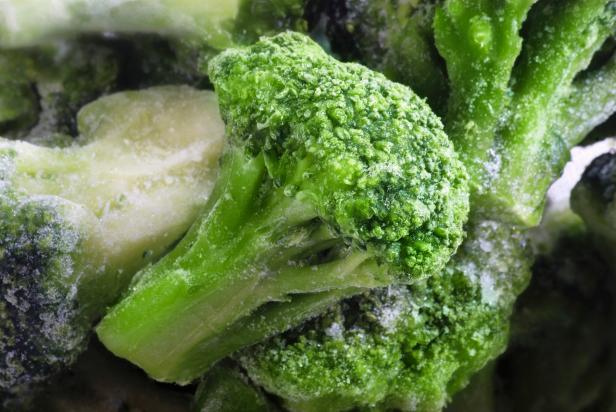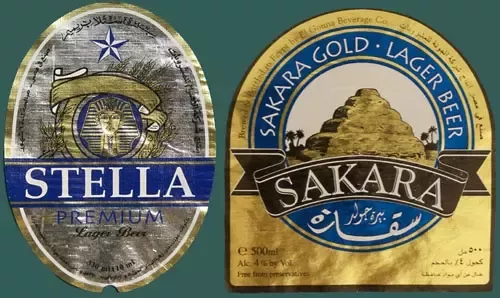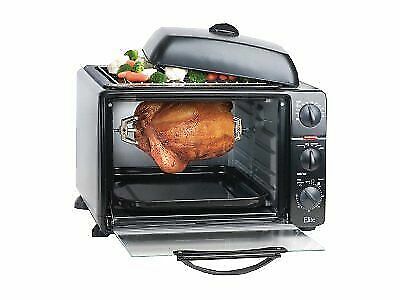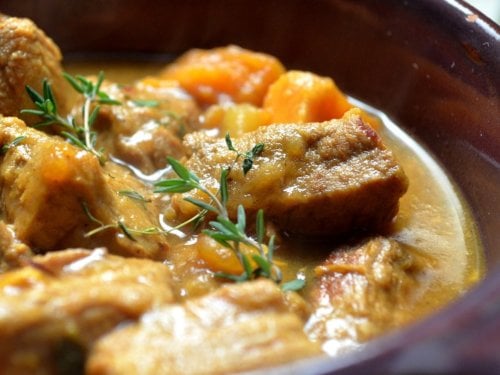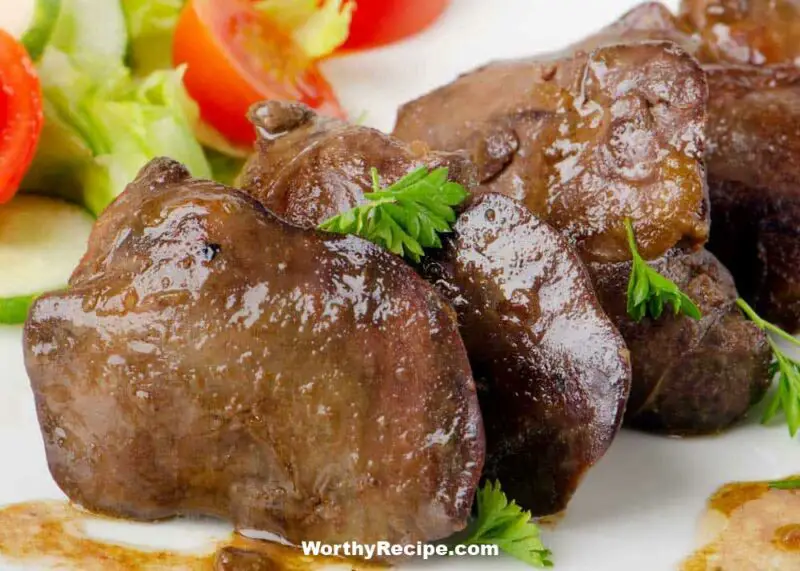Can You Eat Frozen Broccoli Without Cooking? A Comprehensive Guide
Introduction
Broccoli is one of the most popular and well-loved vegetables, known for its many health benefits and versatility in the kitchen. It is an excellent source of fiber, vitamins A, C, and K, and minerals like calcium, iron, and potassium. Although fresh broccoli is preferred by many home cooks, it can be challenging to find good quality produce year-round. This is where frozen broccoli comes in – it’s a convenient and affordable way to enjoy this vegetable without having to worry about seasonality.
In this comprehensive guide, we’ll answer the question: can you eat frozen broccoli without cooking? We’ll also explore the pros and cons of eating broccoli this way, discuss safety concerns with consuming raw or uncooked vegetables, look at how heat affects the nutritional value of vegetables, and provide tips on preparing frozen broccoli for consumption. Let’s dive in!
Pros and Cons of Eating Frozen Broccoli Without Cooking
Pros:
Convenience Factor
One of the main advantages of eating frozen broccoli without cooking is convenience. It’s a quick and easy snack that requires no preparation time or effort. You can take a bag of frozen broccoli out of the freezer, let it thaw for a few minutes, and eat it as is.
Retention of Nutrients
Another benefit of consuming frozen broccoli without cooking is that it retains most of its nutritional value. Freezing helps to preserve the vitamins and minerals that fresh broccoli contains. According to studies, frozen vegetables are often just as nutritious (if not more) as their fresh counterparts since they’re picked at peak ripeness and immediately flash-frozen.
Quick and Easy Snack
Frozen broccoli can be an excellent snack option for those looking to get some extra nutrients without having to put in much effort. It’s an excellent addition to smoothies, and you can also mix it with other vegetables for a simple and healthy salad.
Cons:
Risk of Illness
Eating raw or uncooked vegetables can pose some risks, primarily if they’re not washed properly. Raw vegetables are often sources of foodborne illnesses like E. coli and Salmonella. Consequently, consuming frozen broccoli without cooking comes with a degree of risk.
Changes in Taste and Texture
Although frozen broccoli is easy and convenient, it may not taste as good as fresh broccoli when eaten raw or uncooked. When frozen, the texture changes quite dramatically, making it less appetizing than its fresh counterpart. It might also lose some of its flavor or become watery.
Lowered Absorption of Certain Nutrients
While freezing retains many of the nutrients present in broccoli, it may reduce absorption levels of some vitamins when consumed raw or uncooked. Vitamin C is one such vitamin; it is more sensitive to heat than other vitamins and is lost during the thawing process.
Safety Concerns with Consuming Raw or Uncooked Vegetables
When it comes to eating raw or uncooked vegetables, there are some safety concerns you should be aware of. Vegetables grown in contaminated soil or those that have been exposed to toxins can harbor bacteria like E. coli, Salmonella, Listeria, and Campylobacter. These bacteria can cause food poisoning and potentially lead to severe illness.
It’s important to note that cooking vegetables (especially those that come into contact with soil) is necessary to kill harmful bacteria and make them safe for consumption. Although washing raw vegetables is essential, it may not effectively eliminate all bacteria types that cause food poisoning.
Overall, the decision to eat frozen broccoli without cooking is a personal preference. If you choose to eat it raw or uncooked, it’s essential to measure the food safety risks and take precautions to minimize them.
Ways to Safely Consume Uncooked Vegetables
There are some ways to safely consume raw vegetables. Here are a few tips:
- Wash vegetables thoroughly before eating or cooking them
- Soak vegetables in saltwater or apple cider vinegar to remove any bacteria present on the surface – this method is particularly helpful for greens like spinach and kale
- Avoid cross-contamination by using separate cutting boards, utensils, and plates for raw and cooked foods.
- Buy vegetables from reputable sources that follow food safety guidelines
Effects of Heat on Nutritional Value of Vegetables
Cooking can have both positive and negative effects on the nutritional value of vegetables. Some nutrients can be destroyed when exposed to high heat, while others are made more available through the heating process.
How Heat Affects Different Vitamins, Minerals, and Phytochemicals in Vegetables
Here’s how various vitamins, minerals, and phytochemicals are impacted by different levels of heat:
- Vitamin C: Sensitive to heat; Vitamin C content decreases with longer cooking time.
- Vitamin K: Resistant to heat; Vitamin K is not affected much by cooking.
- Vitamin A: Resistant to heat; Cooking increases bioavailability of Vitamin A.
- Beta-Carotene: Resistant to heat; Cooking increases bioavailability of beta-carotene.
- Folate: Sensitive to heat; Cooking destroys folate.
- Phytochemicals: Resistant to heat; cooking increases the bioavailability of certain phytochemicals such as lutein and beta-carotene.
Optimal Temperatures for Cooking Vegetables
The optimal temperature for cooking vegetables varies depending on the vegetable’s type and the particular nutrients involved. Generally speaking, short cooking times at lower temperatures are better for preserving the nutritional value of vegetables.
Comparative Nutrient Value Between Raw and Cooked Broccoli
A study published in the International Journal of Food Sciences and Nutrition found that steamed broccoli retained more nutrients than raw or boiled broccoli. The study showed that steaming resulted in higher antioxidant activity, total phenolic levels, total vitamin C, and glucosinolate content.
While it’s essential to consume enough raw vegetables, cooking them can have its benefits. Steaming is generally considered one of the best ways to cook broccoli since it preserves most of its nutritional value.
Benefits of Eating Broccoli
Aside from its nutritional value, there are many other health benefits associated with consuming broccoli.
Health Benefits
- Cancer Prevention Properties: Broccoli contains a compound called sulforaphane, which has been shown to help prevent cancer.
- Improved Digestion: Broccoli is high in fiber, which keeps digestion running smoothly and helps prevent constipation.
- Cardiovascular Health Benefits: Eating broccoli can help reduce cholesterol levels and improve heart health. It’s also rich in vitamin K, which is essential for the blood clotting process.
Culinary Uses
Broccoli is an incredibly versatile vegetable that can be used in various dishes. Here are some ways to use broccoli in your cooking:
- Veggies: Add broccoli to stir-fries, curries, and noodle dishes.
- Sides: Roast or steam broccoli as a side dish for meat or poultry.
- Pasta: Toss cooked spaghetti with steamed broccoli, garlic, and olive oil for an easy weeknight dinner.
Best Ways to Prepare Frozen Broccoli for Consumption
There are several methods you can use when preparing frozen broccoli for consumption. When it comes to thawing frozen broccoli, two techniques are typically recommended:
Thawing Techniques
- Microwave Thawing: Place the frozen broccoli in a microwave-safe container and microwave on high for 30 seconds to a minute until thawed.
- Refrigerator Thawing: Put the frozen broccoli in a covered bowl and place it on the refrigerator’s bottom shelf overnight to thaw gradually.
Cooking Methods
Here are some cooking methods you can use when preparing frozen broccoli:
- Boiling Broccoli: Boil water with salt and add the thawed or unthawed frozen broccoli once the water is boiling. Cook for three minutes until fork-tender.
- Steaming Broccoli: Place the thawed or unthawed frozen broccoli in a steamer basket over boiling water and steam for three to five minutes until tender.
- Sautéing or Stir-Frying: Heat a skillet over medium-high heat and add olive oil, garlic, and thawed broccoli. Cook for three to five minutes until crisp-tender.
- Grilling or Roasting: Preheat your grill or oven to 400°F. Toss the thawed broccoli with olive oil, salt, and pepper, then grill or roast for eight to ten minutes until browned in spots.
Recipes Using Frozen Broccoli
Here are a few delicious recipes you can make using frozen broccoli:
- Pasta with Frozen Broccoli and Pesto Sauce: Cook spaghetti according to the package instructions. While the pasta is cooking, sauté thawed broccoli and garlic in a skillet for three minutes. Toss the cooked pasta with the broccoli mixture, pesto sauce, grated Parmesan cheese, and red pepper flakes.
- Cheesy Frozen Broccoli Casserole: Preheat your oven to 375°F. Cook thawed frozen broccoli according to package instructions. In a bowl, mix cream of mushroom soup and milk until smooth. Add cooked broccoli to the mixture, pour it into a baking dish, and sprinkle shredded cheddar cheese on top. Bake for 25 minutes, until cheese is melted.
- Roasted Garlic Frozen Broccoli Soup: Preheat your oven to 375°F. Slice off the top of a whole garlic bulb to expose the cloves inside. Drizzle with olive oil and roast it for thirty-five minutes. Remove from oven; let it cool. Blend thawed frozen broccoli with roasted garlic cloves in a blender until pureed. Add chicken/vegetable broth and cook over medium heat for fifteen – twenty minutes; ladle into soup bowls.
Where to Buy Quality Frozen Broccoli
When buying frozen broccoli, it’s essential to choose a reputable brand or supplier that follows adequate food safety guidelines. Look for brands with clear labels indicating the ingredients and nutritional information. You can find frozen broccoli in any grocery stores near the frozen vegetables section.
Conclusion
In conclusion, eating frozen broccoli without cooking comes with its pros and cons. It is convenient and retains most of the vegetable’s nutrients; however, it can pose a degree of risk of illness and may have changes in taste and texture. We encourage readers to experiment with different cooking methods to determine their preferred way of consuming broccoli. Always prioritize safety when handling raw foods and choose reputable brands when buying frozen broccoli. By following these tips, you’ll be able to enjoy all the health benefits that this fantastic vegetable has to offer, no matter what time of year it is!
Frequently Asked Questions
1. Is it safe to eat frozen broccoli without cooking it first?
Absolutely! Frozen broccoli is blanched before being packaged, which kills off any harmful bacteria or contaminants. As long as you store your frozen broccoli properly and handle it safely, it is perfectly safe to eat without cooking.
2. What are the benefits of eating frozen broccoli?
Frozen broccoli is just as nutritious as fresh broccoli, and in some cases even more so. The freezing process can actually help lock in nutrients and prevent them from being lost during cooking. Plus, frozen veggies are often more affordable and convenient than fresh ones.
3. Can I add frozen broccoli directly to a salad or smoothie?
Yes, absolutely! Frozen broccoli can make a great addition to a variety of dishes, including salads, smoothies, and stir-fries. Just be sure to thaw it first (either by leaving it in the fridge overnight or running it under cold water for a few minutes) before incorporating it into your recipe.
4. Should I cook frozen broccoli if I want to use it in a hot dish?
While you don’t necessarily have to cook frozen broccoli before using it in a hot dish like a casserole or stir-fry, doing so can help bring out its flavor and texture. Simply sauté or steam your defrosted vegetables for a few minutes until they are heated through and slightly tender – they’ll be ready to use in no time!
